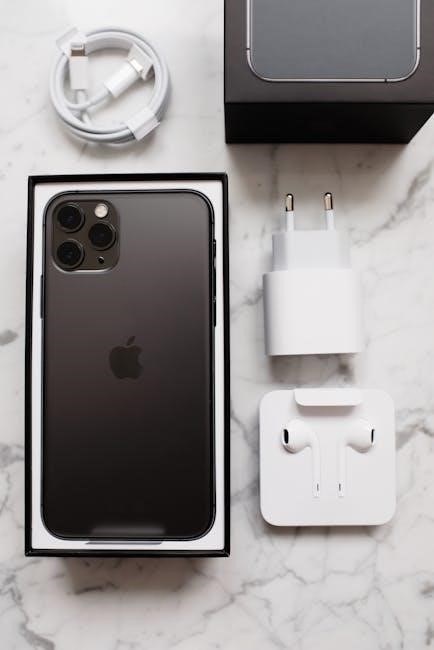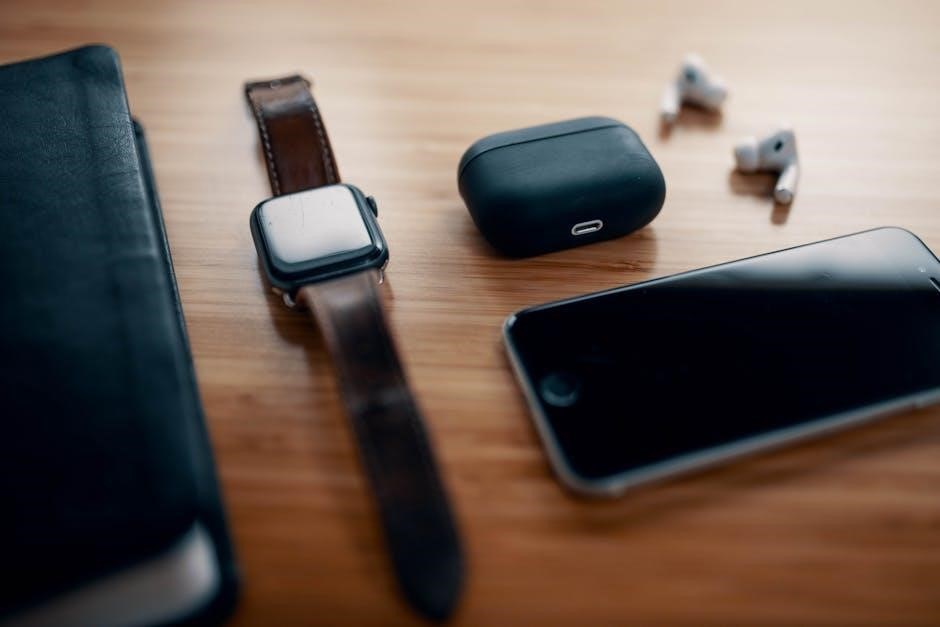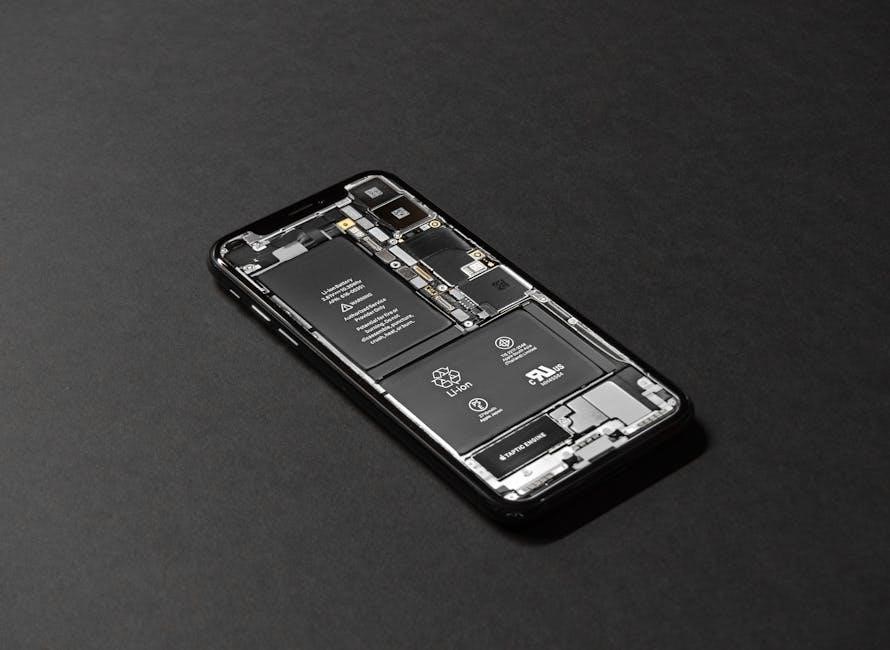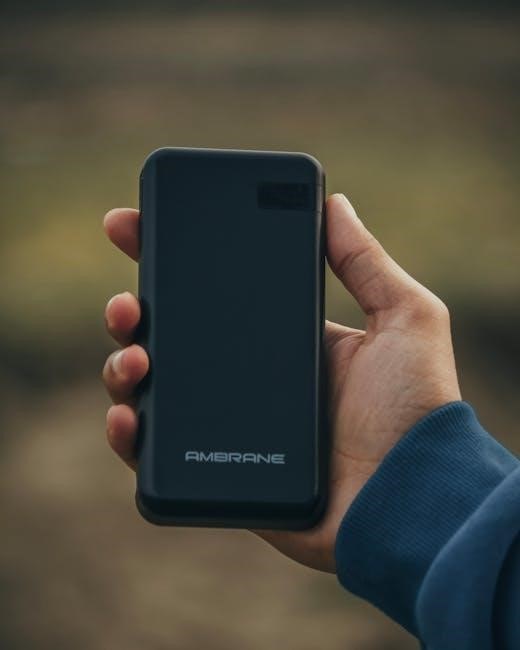
Finding the right Black and Decker smart battery charger manual is crucial for safe and effective use. These manuals provide essential details on operation, safety precautions, and troubleshooting tips.
Finding Your Black and Decker Battery Charger Manual
Locating your Black and Decker battery charger manual can be a straightforward process. Start by checking the Black and Decker website, where you can often find digital versions of manuals for various models. Manualslib.com is another excellent resource, offering a wide range of user guides for Black and Decker products. Searching online using the model number is an effective way to find a specific manual. Many online retailers also provide links to manuals on their product pages. Remember to download the PDF version for easy access and future reference. These manuals offer vital instructions.
Black and Decker Battery Charger Models and Manuals
Black and Decker offers a diverse range of battery chargers, each designed for specific battery types and charging needs. The product line includes models like the VEC1086BBD, VEC1089ABD, and VEC1093DBD, among others. Each charger model has its corresponding user manual, providing detailed instructions. These manuals are essential for understanding the charger’s features, operation, and safety guidelines. Manuals can be found on the Black and Decker website or through online manual repositories. Make sure to identify your charger model correctly to locate the appropriate manual. Utilizing the correct manual ensures proper charging and prevents potential damage.

Safety Instructions
Adhering to safety instructions is paramount when using a Black and Decker smart battery charger. These guidelines minimize risks associated with battery charging, ensuring user safety and preventing damage.
Importance of Safety Instructions
Prioritizing safety instructions when operating a Black and Decker smart battery charger is of utmost importance. These instructions outline potential hazards, such as electrical shock and battery explosions, providing guidelines to mitigate risks effectively. Understanding these precautions ensures user well-being, protects the charger from damage, and prevents harm to the battery being charged. Neglecting safety protocols can lead to serious injuries or property damage. Always consult the manual and adhere to all safety warnings before initiating the charging process. Following instructions guarantees a secure and efficient charging experience, prolonging the lifespan of both the charger and the battery.
Hazards of Lead-Acid Batteries
Lead-acid batteries, commonly used in vehicles and other applications, present several hazards that users of Black and Decker smart battery chargers must be aware of. These batteries contain sulfuric acid, a corrosive substance that can cause severe burns upon contact with skin or eyes. Additionally, during the charging process, lead-acid batteries release flammable hydrogen gas, which can accumulate and potentially explode if ignited by sparks or open flames. Proper ventilation is crucial to dissipate this gas. Moreover, lead itself is a toxic heavy metal, and improper handling or disposal of damaged batteries can lead to environmental contamination. Always wear protective gear.
Explosive Gases Warning
Charging lead-acid batteries, even with a Black and Decker smart charger, generates explosive hydrogen gas. This colorless, odorless gas can easily ignite, causing a potentially dangerous explosion. It is crucial to ensure adequate ventilation in the charging area to prevent gas accumulation. Avoid sparks, open flames, and smoking near the battery and charger. Always disconnect the charger from the power source before disconnecting the battery clamps to minimize the risk of sparks. Review the charger’s manual for specific safety guidelines regarding gas ventilation and spark prevention. Failure to follow these precautions could result in serious injury or property damage. Prioritize safety at all times.

Understanding Your Black and Decker Smart Battery Charger
Black and Decker smart battery chargers employ advanced technology for efficient and safe battery charging. These chargers feature multi-stage charging, microprocessor control, and automatic shut-off features to optimize battery life.
Features of Smart Battery Chargers
Smart battery chargers, like those from Black and Decker, offer numerous advanced features. These include multi-stage charging, which optimizes battery health and longevity by varying the charge rate. They also incorporate microprocessor control, ensuring precise and safe charging. Automatic shut-off prevents overcharging, protecting the battery from damage. Some models offer battery type selection, catering to different battery chemistries like AGM, Gel, and standard lead-acid. Digital displays provide real-time information on charging status, voltage, and current. Reverse polarity protection safeguards the charger and battery from incorrect connections. These features combine to deliver efficient, safe, and user-friendly battery charging.
3-Stage Charging Technology
Black and Decker smart battery chargers often employ 3-stage charging technology for optimal battery care. Stage one, bulk charging, delivers a high current to rapidly restore the battery’s charge. The second stage, absorption charging, reduces the current as the battery reaches its full voltage capacity, ensuring a thorough charge without overstressing the battery. Finally, the float stage maintains the battery at a safe voltage level, compensating for self-discharge and keeping it ready for use. This process maximizes battery life, improves performance, and allows the charger to be left connected for extended periods without risk of damage.
Microprocessor Control
Modern Black and Decker smart battery chargers utilize microprocessor control to manage the charging process. The microprocessor continuously monitors battery voltage, current, and temperature, adjusting the charging parameters in real-time for optimal performance and safety. This intelligent control system prevents overcharging and undercharging, extending the battery’s lifespan and ensuring it reaches its full potential. Furthermore, the microprocessor enables advanced features such as battery type selection and error code diagnostics, providing users with valuable information about the battery’s condition and any potential issues. This precise control ensures efficient and reliable charging.

Using Your Black and Decker Smart Battery Charger
Properly using your Black and Decker smart battery charger involves understanding initial setup, clamp connections, and selecting the appropriate charge rate. Following these steps ensures safe and efficient charging.
Initial Setup and Connections
Before using your Black and Decker smart battery charger, ensure a proper initial setup. Begin by placing the charger on a stable, non-flammable surface in a well-ventilated area. Verify that the charger’s voltage matches your battery’s requirements to prevent damage during the charging process. Next, inspect the battery terminals for any corrosion or dirt, and clean them thoroughly with a wire brush if necessary.
Correct connections are crucial for safe operation. Always connect the positive (red) clamp to the positive terminal and the negative (black) clamp to the negative terminal of the battery, or chassis ground as specified by the vehicle manufacturer. Double-check the polarity to avoid reverse polarity, which can damage both the charger and the battery. Securely attach the clamps to ensure good contact.
Connecting Charger Clamps
Properly connecting the charger clamps is essential for safe and effective battery charging. Begin by identifying the positive (+) and negative (-) terminals on your battery. Attach the red (positive) clamp to the positive terminal, ensuring a secure and firm grip. Then, connect the black (negative) clamp to the negative terminal or, as specified in your vehicle’s manual, to a suitable chassis ground away from fuel lines and the battery.

Double-check that the clamps are securely attached and making good contact to prevent sparks or poor charging performance. Avoid connecting the negative clamp directly to the negative terminal if the battery is installed in a vehicle, as this can create a spark near the battery and potentially ignite explosive gases. After confirming the connections, proceed with selecting the appropriate charge rate.
Selecting the Correct Charge Rate
Choosing the right charge rate is vital for optimizing battery life and charging efficiency. Black and Decker smart battery chargers typically offer multiple charge rate options, such as 2 Amp, 4 Amp, 6 Amp, or even higher for jump-starting. Selecting the appropriate rate depends on the battery’s size and type. For smaller batteries, like those in motorcycles or lawnmowers, a lower charge rate (2 Amp) is recommended to prevent overcharging and damage.
Larger batteries, such as those in cars or trucks, can handle higher charge rates (4 Amp or 6 Amp) for faster charging. Consult your battery’s specifications or the Black and Decker charger manual to determine the optimal charge rate. Using an incorrect charge rate can lead to premature battery failure or extended charging times.

Operating Instructions
Proper operation ensures efficient charging and extends battery life. Understanding the digital display, starting the process, and selecting the battery type are crucial steps for optimal performance.
Digital Display Interpretation
The digital display on your Black and Decker smart battery charger provides vital information about the charging process. Initially, it may show “000” indicating power is applied. During charging, it displays voltage, current, or error codes. Understanding these codes is essential for troubleshooting.
Refer to your specific model’s manual for a detailed list of error codes and their meanings. The display also indicates the charging stage and when the battery is fully charged. Proper interpretation ensures safe and efficient charging, maximizing battery life and preventing damage. Always consult the manual for specific details.
Starting the Charging Process
Once you’ve connected the charger clamps correctly, initiating the charging process is straightforward. Ensure the charger is plugged into a functioning power outlet. Select the appropriate battery type using the selector button, matching it to your battery (e.g., AGM, Gel, or Standard).
Next, choose the desired charge rate based on your battery size; smaller batteries require lower rates. After selecting the settings, press the “Charge” button (if applicable). The digital display will show the charging progress. Monitor the charger periodically, but avoid disconnecting it until charging is complete for optimal results and battery health.

Battery Type Selection
Selecting the correct battery type on your Black and Decker smart charger is essential for optimal charging and to prevent battery damage. Different battery types, such as AGM, Gel, and Standard lead-acid batteries, require specific charging profiles.
Consult your battery’s manufacturer specifications to identify the correct type. Use the “Battery Type” selector button on the charger to match the setting to your battery. Choosing the wrong setting can lead to overcharging or undercharging, reducing battery life and potentially causing harm. Always double-check before initiating the charging process.

Troubleshooting
Encountering issues with your Black and Decker smart battery charger? This section offers guidance on diagnosing common problems and interpreting error codes to help resolve charging difficulties effectively.
Interpreting Error Codes
Black and Decker smart battery chargers often display error codes on their digital screens to indicate specific issues. Understanding these codes is essential for effective troubleshooting. Consult your charger’s manual for a detailed list of error codes and their corresponding meanings. Some common error codes may indicate reverse polarity, a faulty battery, or an internal charger malfunction. Referencing the manual will provide step-by-step instructions on how to address each specific error, ensuring safe and efficient resolution. Ignoring error codes can lead to improper charging or damage to the battery and charger. Always prioritize safety.
Common Charging Problems
Several issues can arise during the charging process with a Black and Decker smart battery charger. One frequent problem is the charger failing to recognize the battery, often due to poor connections or a deeply discharged battery. Another common issue involves the charger displaying an error code, signaling a problem with polarity or battery health. Overheating can also occur, potentially caused by a faulty charger or unsuitable ambient temperature. It’s crucial to consult the user manual for specific troubleshooting steps related to each problem. Ensuring proper connections, selecting the correct charging rate, and maintaining adequate ventilation can prevent many of these issues.

Specific Black and Decker Charger Models
Different Black and Decker charger models have unique features and functionalities. User manuals for specific models provide detailed instructions, troubleshooting tips, and safety guidelines tailored to that particular device.
VEC1086BBD User Manual
The VEC1086BBD user manual offers comprehensive guidance for operating this specific Black and Decker smart battery charger. It includes detailed instructions on initial setup, proper connections, and charge rate selection. The manual also covers digital display interpretation, enabling users to understand charging status and potential error codes. Furthermore, it provides valuable information on battery type selection, ensuring compatibility and optimal charging performance. Safety instructions are emphasized to prevent hazards associated with lead-acid batteries and explosive gases. By consulting the VEC1086BBD manual, users can maximize the charger’s lifespan and maintain a safe charging environment. It is a crucial resource for effective and safe battery maintenance.
VEC1089ABD User Manual
The VEC1089ABD user manual is a vital resource for owners of this Black and Decker smart battery charger model. This manual provides step-by-step instructions on how to properly connect the charger to a battery, select the appropriate charge rate (15 Amp, 10 Amp, or 2 Amp), and interpret the digital display. The manual also includes essential safety information to prevent accidents and ensure safe operation, especially regarding lead-acid batteries and explosive gases. Troubleshooting tips are provided to address common charging problems and error codes. Understanding and following the instructions in the VEC1089ABD user manual will help users maximize the charger’s performance and extend the life of their batteries.
VEC1093DBD User Manual
The Black and Decker VEC1093DBD smart battery charger user manual provides comprehensive guidance on operating this fully automatic electronic charger. It covers key features such as the 40/20/10/4 amp charge rates and the 110 amp engine start function. The manual details how to properly connect the charger to a battery, select the appropriate charging mode, and interpret the digital display readings. Safety instructions are emphasized to prevent hazards associated with lead-acid batteries and explosive gases. Troubleshooting tips are included to address common issues. Reviewing the VEC1093DBD user manual is essential for safe and efficient use of this smart battery charger. With careful adherence to the manual’s guidelines, users can ensure optimal performance and longevity.

Maintenance and Care
Proper maintenance and care of your Black and Decker smart battery charger ensure its longevity and reliability. This includes appropriate storage in a dry place and following cleaning instructions to remove any debris.
Proper Storage
To ensure the longevity and optimal performance of your Black and Decker smart battery charger, proper storage is essential. When not in use, the charger should be stored in a clean, dry environment away from extreme temperatures and humidity. Avoid storing it in areas where it could be exposed to direct sunlight, as prolonged exposure can damage the plastic components and internal circuitry.
Before storing, disconnect the charger from both the power source and the battery. Ensure that the clamps are properly secured to prevent damage or corrosion. Ideally, store the charger in its original packaging or a protective case to shield it from dust and physical impacts.
Cleaning Instructions
Maintaining the cleanliness of your Black and Decker smart battery charger is important for its safe and efficient operation. Before cleaning, always disconnect the charger from the power outlet to avoid any electrical hazards. Use a soft, dry cloth to wipe down the exterior surfaces of the charger.
For stubborn dirt or grime, a slightly damp cloth can be used, but ensure no moisture enters the charger’s internal components. Never use harsh chemicals, solvents, or abrasive cleaners, as these can damage the plastic casing and electronic parts; Pay special attention to cleaning the charger clamps, removing any corrosion or debris to ensure a good electrical connection.